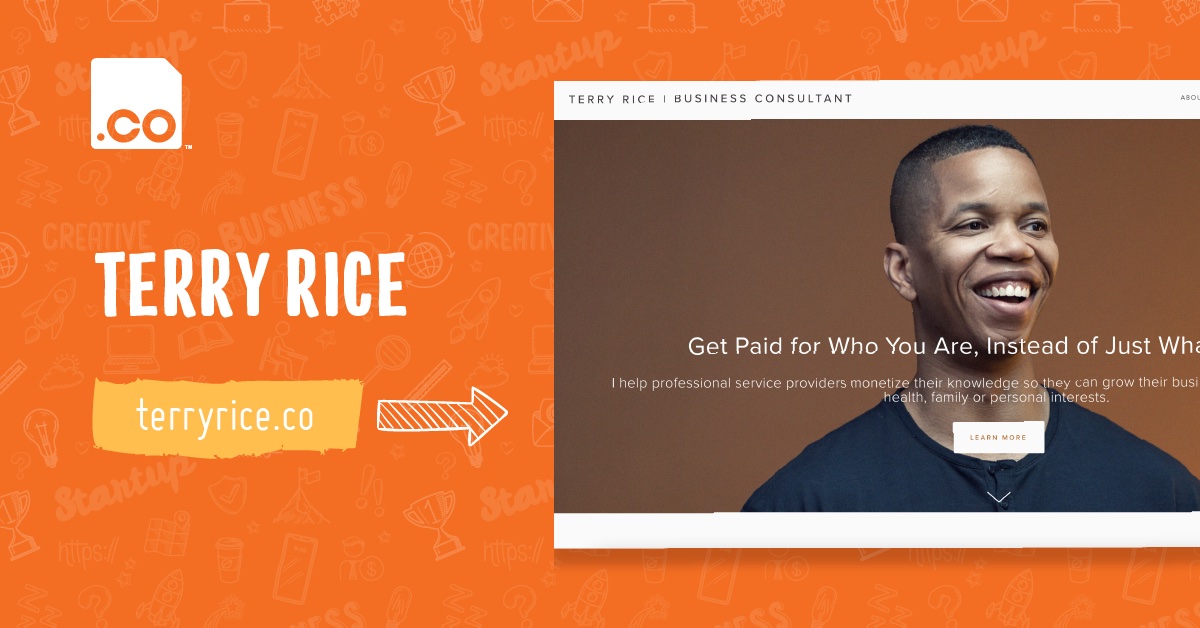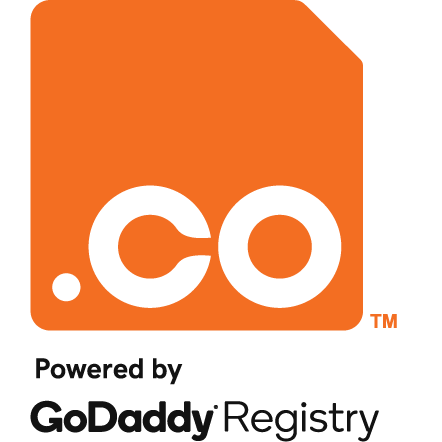Happy Monday, .COers! Thanks for joining us for another installment of our SEO in a Week blog post series. In this blog series, we’ve decided to provide you tons of tactical SEO tips you can apply to your website, broken down by area so you can devote one day of the week to each area. If you’re just tuning in, make sure to take a look at our previous posts on On Site SEO, SEO-friendly design and development and link building.
In today’s post, we’ll be discussing the all-important topics of Keyword Research and Content Strategy. You’ll learn all about how to go about identifying the best goal keywords, and how to use those goals to build a complete content strategy for your website. Let’s dive right in!
What is Keyword Research?
Keyword research describes the process of identifying the best goal keywords for each page on your site. Goal keywords refer to words you would like to rank for within search engines and how you hope potential visitors will go about finding your site. Keyword research takes many factors into consideration, especially industry demand and popularity, trends over time and competitiveness. However, a keyword is only valuable if it is relevant to your site and if it will yield conversions.
Why is Keyword Research Important?
Keyword research is highly important because it will guide many different aspects of your SEO strategy, including content, on-site, social media, and link building. It will also drive your PPC campaigns. Your keyword research will serve as a reference you will constantly refer to as you update the strategies listed above. You will also want to update your keyword research often based on shifting trends and competition.
Starting Your Keyword Research
Goals of Keyword Research
The goal of this whole process is to create an output that comprehensively lists your goal keywords page-by-page. You want it to be easy to use while still being in-depth and chock full of useful data.
What Makes a Good Keyword
A good goal keyword is one that you want to rank for and that will yield conversions. It is smart to target both broad and long-tail keywords.
Broad Versus Long-Tail
The term “broad” refers to a keyword that is not detailed, often consisting of only one or two words, and highly competitive. A “long-tail” keyword refers to a keyword that is highly targeted, often over 2 words, and not very competitive. Think of a big inverted triangle. The more competitive keywords are at the top and cover a wide net of user intent. The lower you go, the long tail keywords are at the bottom—they only apply to a more narrow focus.
Basic Keyword Research Process
1) Identify all the pages on your site (along with their URLs) you’ll be creating keyword goals for in an Excel spreadsheet.
2) Identify your main competitors and find their goal keywords
a. Identify your competitors by performing a search for your goal terms and taking note of the first three results.
b. Visit those sites and try and find out what keywords they are targeting. What keywords are they using in their page content, as well as elements like the page title.
c. Use a tool such as SEMRush to find out more data.
3) Create a “seed” list you’ll be basing your research off of.
a. Brainstorm a long list of the terms that first come to mind when trying to think of your goal keywords.
b. Take a look at your organic keywords data within Google Analytics to identify good keyword targets.
4) Using that seed list, begin using tools to identify more keywords
a. Use the Google AdWords Keyword Tool to find out how many searches are being performed per month for a specific keyword, as well as their competitiveness. Copy and paste your seed list into the tool, select [exact match] on the left-hand side, and click search.
b. Export your keywords and corresponding data.
5) Consider creating “keyword buckets” based on topics.
a. Keyword buckets are keyword groups around targeted topics. If you have a large list of keywords you want to target, consider grouping them like this to get more focus.
6) List goal keywords by page, and if you like, by priority (i.e., primary, secondary, etc.).
a. After you have your list, start narrowing down what you want to target. Think about which terms have a decent search volume but still aren’t too competitive. A good amount of keywords to target is 3 primary targets, and 5-10 secondary targets.
Keyword Research Tools
Outputs and Next Steps
Now that you have your list, you are going to use these goals to create your page titles and other on-site SEO elements, as well as to brainstorm content strategy ideas.
What Is a Content Strategy?
A content strategy refers to the details surrounding the content you will be creating for your website—what types of content will you have? What will it be about? What keywords will it include? Where will you link to it from? How often will you create new content? Who will help you create it? Your keyword research will play an integral part in the creation of your strategy.
Types of Content
- On-Page Verbiage
- Text about the company and/or page
- Calls to action
- Descriptions
- Product Descriptions
- Blog
- Blog Posts
- Static Articles
- Articles and resources that “live” on their own individual pages
- Testimonials
- Customer feedback
- Case Studies
- Includes the “before” state, the process/product used to achieve results, and the “after” state
- Whitepapers & Ebooks
- In-depth, often downloadable guides devoted to a particular topic
- Infographics
- A graphic which illustrates a topic, idea, process, or data set
- Videos
- A video embedded on a website
- Images
- Photographs or illustrations
- Podcasts
- An audio or digital file which is often downloadable—podcast topics typically include lectures, commentary, interviews, and how-to guides
Best Practices For Content Types
- On-Page Verbiage—Make it “catchy” and appealing to users. Include goal keywords. Link to other relevant areas of the site. If it makes sense, include bullet points and white space. Ideally, should be 250 words or above.
- Descriptions—Product descriptions should be easy-to-read, concise, and accurately provide site user with everything they need to know about a particular product.
- Blog—Blog should be hosted on the site domain as opposed to a sub-domain. Blogging should be done on a regular basis. Topics should be interesting to site visitors and should include topics other than just write-ups about your website—think industry blog posts and news, interesting videos or podcasts, studies, infographics, how-to guides, etc. Make sure posts are easily shareable via social media buttons for Facebook, Twitter, Pinterest, etc.
- Static Articles—Include goal keywords. Create articles and resources centered on topics that are valuable to your site users.
- Testimonials—Include more than one or two. Make sure they’re easy to read by including plenty of white space on the page. Include customer’s first name, where they are from and—if applicable—what product they bought.
- Case Studies—Make them useful yet concise and easy to digest.
- Whitepapers & Ebooks—Spend time researching other good whitepapers in your field. Create an interstitial sign-up form page so that people have to sign up for your email list before they download the Ebook.
- Infographics—Make infographics easy to digest and interesting to read. Use topics that are current and relevant. Make them easily shareable.
- Videos—Create videos that are compelling and relevant. Since search engines still like actual verbiage best, make sure you include content on the page instead of just posting a ton of videos.
- Images—Remember to use alt-text describing what the topic is about.
- Podcasts—Similar to other multi-media formats, remember to include plenty of static content other places on the page.
How Much Do I Need?
In terms of content, quality outweighs quantity. Don’t churn out a ton of articles and blog posts just for the sake of having content on your site. Take time to create quality content that your site visitors will enjoy and find useful. Make sure it is well-written, uses proper grammar and spelled correctly. Find the right “voice” that will resonate best with your site visitors.
Make sure you are regularly updating your content. Search engines love fresh content! Plan on updating your blog at least 2-3 times a week, and try to create other content—like articles and resources—on a continuing basis. For major content endeavors—such as EBooks or Whitepapers—aim to add one per quarter.
When it comes to content, it is very useful to have a content creation schedule. Block off time a few days out of the week to blog, and block off time every two weeks to write content such as articles.
How Do I Figure Out What to Write?
Using Your Keyword Research
Use your keyword research as a starting point—it will help you with brainstorming topic ideas.
Brainstorm
Brainstorm content ideas off of the top of your head—just write down what comes to mind, you can edit later! Enlist co-workers to help you; the more minds, the better.
Competition
What is your competition posting? Take a look at what kind of articles they have on their site, what they’re blogging about, and what they are posting on social media.
Demand, Popularity and Interest
Use data from tools like Google Trends to gauge keyword trends. Stay on-top of current events and what’s resonating in the blogosphere and on social media sites. Keep in mind some general rules of thumb when it comes to content:
- Keep it interesting and easy to read
- Integrate white space and bullet points
- If applicable, integrate humor
- Write about popular topics
- Create content that will prove useful in your visitors’ buying process
Getting Help
Feeling overwhelmed by content creation? Get help! Ask your co-workers and/or interns to help you by contributing their own blog posts. Break it out into manageable chunks and mini-content projects. Hire an intern, freelancer or in-house copywriter to really focus on pushing out great content.
After You Create
So you’ve got this great content, now what?
Spread the word by Tweeting about it and writing about it on your other social media pages like Facebook. Make sure you are making it easy to share by adding social media sharing buttons—also, don’t forget to make the content easy to email and print. Show off your content! Consider featuring a call to action about your latest post on your homepage. Link to it internally. When crafting your link building strategy, include it into your link target list. Spread the word to colleagues and friends and ask them to share via their social networks.
And, don’t forget—content creation should never end. Keep the cycle going!
Expert Advice
Did you know that you can get a free SEO consultation for your website, chock full of customized content advice, just by becoming a .CO member? Join our membership program to gain access to all kind of great perks, including an hour-long SEO Consultation with yours truly.
We hope we’ve helped you to gain some valuable knowledge about keyword research and how to craft your own content strategy. At .CO, we are all about SEO, which is why we continue to bring you SEO knowledge and tips you can use to be your absolute best! Be sure to check back regularly for more in-depth SEO posts!





